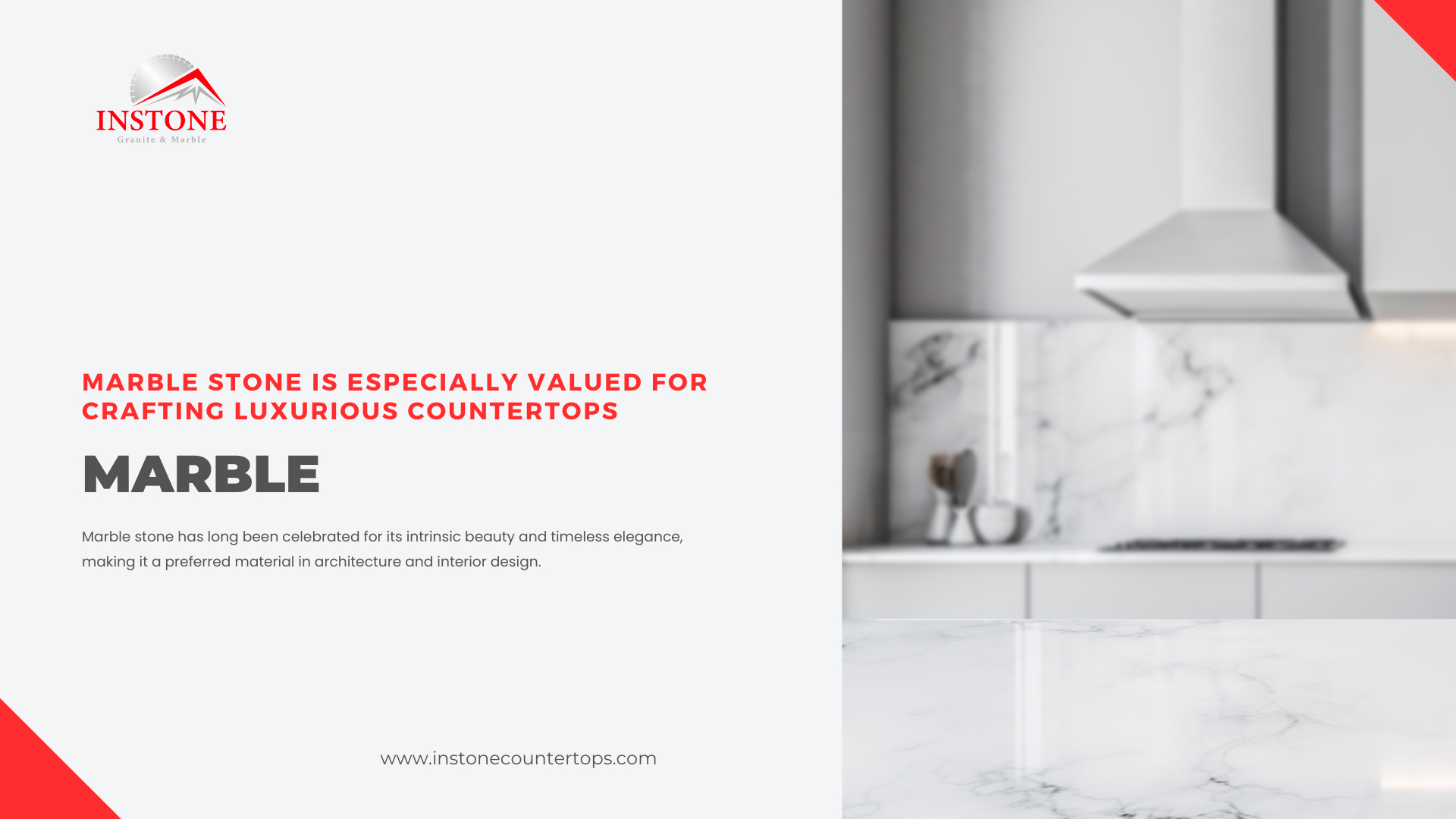Marble Stone

Marble stone has long been celebrated for its intrinsic beauty and timeless elegance, making it a preferred material in architecture and interior design. As a natural stone, its unique characteristics stem from its formation process, where minerals undergo recrystallization under high pressure and temperatures in the earth’s crust, resulting in the beautiful and varied marble varieties we see today. Extracted from quarries around the world, each type of marble—from the pure white streaks of Carrara to the deep black color of Marquina—reflects a distinct geological story, making marble not just a material, but a piece of the earth’s history, sculpted and polished for our use.
Types of Marble
The diversity of marble types available today is a testament to the natural beauty and complexity of this stone, with each variant offering a unique palette of veins, colors, and textures that cater to a wide array of tastes and design preferences.
White Marble
White marble stands as a symbol of purity and brightness, embodying classic elegance with its soft veining and luminous surface. Beyond its historical use in architecture, this exquisite material has become a favorite for enhancing the interior of homes. From the sophisticated Carrara to the striking Calacatta, known for its bold veins and dramatic contrast, and the pristine Thassos, celebrated for its snow-white sparkle, white marble has found its place in kitchen countertops, bathroom vanities, and elegant flooring, adding a touch of timeless beauty to modern living spaces.
Beige Marble
Offering a palette of warm, earthy tones, beige marble infuses spaces with a subtle, understated elegance. Varieties like Crema Marfil and Botticino have a uniform background sprinkled with soft veining or fossils, lending a serene ambiance to interiors. This marble is often used for floors, walls, and bathroom vanities, where its chromatic warmth enhances the room’s aesthetics.
Green Marble
With its rich, verdant hues, green marble like Verde Guatemala or the Italian Verde Alpi adds a touch of nature’s serenity. The presence of minerals such as serpentine gives this marble its distinctive color and veining, making it a striking choice for accent walls, countertops, or decorative objects. Its natural color variation ranges from light green to deep, almost black green, providing a dramatic backdrop in any space.
Black Marble
For those seeking a bold, dramatic flair, black marble varieties like Marquina offer stark contrast and bold veins. The intense black background, often highlighted with white calcite veins, creates a striking visual impact, ideal for luxurious floors, statement islands, or elegant bathroom surfaces. Black stone, with its crystal structure and high density, adds a touch of sophistication and depth to modern and classic designs alike.
Gray Marble
Gray marble, including Bardiglio or Pietra Grey, delivers a sophisticated and contemporary look. With its spectrum from light gray to pearly shades, complemented by striking streaks or more homogeneous patterns, gray stone fits perfectly in modern interior designs. It’s especially popular for creating a sleek, urban aesthetic in kitchens, bathrooms, and as cladding for buildings.
Each type of this stone is a result of specific geological processes, including the recrystallization of calcite or dolomite crystals, the presence of mineral impurities like iron oxides, and varying degrees of metamorphism and sedimentation. The extraction of marble from quarries around the globe brings to light the natural artistry and history embedded in each slab, offering designers and homeowners a vast canvas to sculpt, clad, and adorn their spaces.
Properties
Marble is a metamorphosed limestone, primarily composed of calcite or dolomite, making it a crystalline and naturally occurring stone. Its formation through the process of recrystallization grants it unique patterns and depth. As a relatively soft stone, it’s susceptible to etching by acids, making it essential to consider where and how marble is used, especially in high-traffic areas. Additionally, the presence of minerals such as magnesium and silica impurities can influence marble’s color and vein patterns, resulting in the vast array of marble types available, from classic white to vibrant hues with intricate brown or green veins. This diversity allows marble to be used in a multitude of applications, from elegant floor tiles and kitchen countertops to decorative mosaics and facades, offering both versatility and timeless beauty to architectural and design projects.
Maintenance and Care
Caring for marble involves regular sealing to protect its porous surface from staining and etching. It’s recommended to wipe spills immediately, use coasters under acidic drinks, and clean with pH-neutral cleaners to maintain its luster and integrity. With proper care, it can retain its pristine condition for decades. Additionally, avoiding abrasive cleaners and harsh chemicals preserves its surface from unnecessary wear and damage, ensuring the stone’s natural beauty is not diminished over time. Periodic professional resealing, especially for high-use areas and specific types of marble like travertine or those with a higher calcitic composition, can further enhance durability and resistance to everyday spills and impacts, maintaining the marble’s elegance and uniformity.
Cost
The cost of marble varies widely based on its rarity, origin, and demand. Common varieties like Carrara are more affordable, while exotic types like Calacatta or the rare Bianco Lasa come with a premium price tag. Installation costs also play a significant role, influenced by the complexity of the job and the marble’s thickness. Factors such as its finish (polished, honed, or brushed) and the intricacy of the desired cut can also affect the overall cost, as can the need for custom shapes or sizes to fit specific design requirements. Additionally, transportation and handling fees, especially for marble imported from international quarries, can contribute significantly to the final price, making it crucial for buyers to consider all associated costs when planning their marble projects.
Why it’s the Best Stone for Your Countertops
Marble countertops offer an unmatched aesthetic appeal, adding value and beauty to any kitchen or bathroom. The cool temperature of marble makes it ideal for baking and pastry-making surfaces. Its ability to diffuse light adds a radiant atmosphere to interiors, enhancing the overall design. Despite its need for careful maintenance, the unique patterns, timeless elegance, and the warmth it brings to spaces justify its popularity.
Furthermore, its natural resilience against heat makes it a practical choice for areas exposed to hot utensils and appliances, providing a durable yet luxurious work surface. The wide range of colors and vein patterns available in this stone ensures that each countertop can be personalized to fit the individual style and decor of a home, making it a versatile option for homeowners seeking both functionality and aesthetic perfection in their living spaces.
In summary, marble embodies the convergence of nature’s artistry with human craftsmanship. Its variety in colors and patterns ensures that there is a marble for every design palette, making it a distinguished choice for those looking to infuse their spaces with natural beauty and sophistication. Whether adorning a luxurious bathroom or a chef’s kitchen, marble countertops stand as a testament to enduring style and grace.


